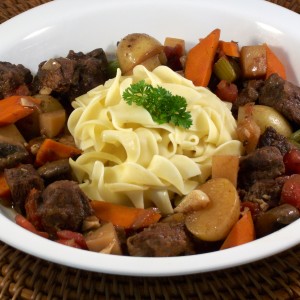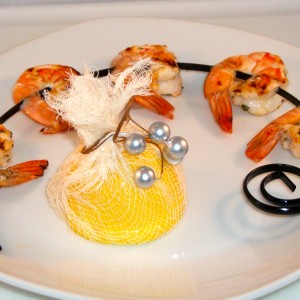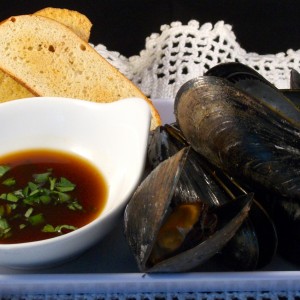Great Culinary Garnish!
Patti Cook, BA, MS, Ed.D., Culinary Grad and B & P Student (Photo Credit)
Since cuisine began to matter, garnishes have mattered. Garnishes are included in Escoffier’s classic text “Basic Elements of Fine Cookery.” He believed they were so important because they provided the principal accompaniments to dishes as well as the adornment. Technically, a garnish is anything that decorates or adds to a dish. It can embellish the dish, making it prettier, and it can also add a top note of flavor or a contrasting texture. I learned in online culinary school that incorporating garnishes provides the wow factor that takes good food to great food. Done right, garnishes make food look visually appealing—and therefore more appetizing.
There are a few good secrets for creating great garnishes. Above all, they have to add to or complement the dish in some way. The flavors have to make sense together. Chile-lime cashews likely taste better with stir-fry than Italian seasoned pine nuts would. Try to highlight a flavor that is already in the dish. For example, steam mussels in an Asian broth and serve them with a dipping sauce containing the same chopped herbs used in the steaming liquid and sprinkled on the final dish. Another easy way to beautifully garnish all kinds of dishes is to sprinkle chopped herbs or nuts on top to add color, flavor and texture. There are good reasons parsley is often used as an easy garnish—it pairs well with lots of different dishes and is always a good choice to add great fresh flavor, contrasting texture and beautiful color.
Garnishes should be edible, but not always. One of my chef mentors early in my career used to say that if it wasn’t edible, it shouldn’t be on the plate. However, even she acknowledged that the use of fancy toothpicks and beautiful kebab skewers (which are technically considered garnishes since they decorate the plate) were important to culinary presentation. Most chefs agree that a garnish must be food and that a great garnish should be eaten with the dish and somehow make it tastier.
One of the best ways to make a pretty garnish is to use colorful ingredients. Spring is a good time to look for unusual vegetables with crazy amazing colors. Watermelon radishes, for instance, have a fabulous bright pinkish red color, terrific crunch and balanced flavor. Simply cutting one to sprinkle on your salad takes it from OK to WOW. Look around for radishes that are purple, yellow and orange, too, in addition to the usual red. In the summer, look for edible flowers at large grocery stores and farmers markets.
From my kitchen seat, taking that extra step to garnish good food and make it more beautiful, appealing and delicious is worth it. It also shows my passion to give those I love great food that’s both tasty and photo-worthy.





